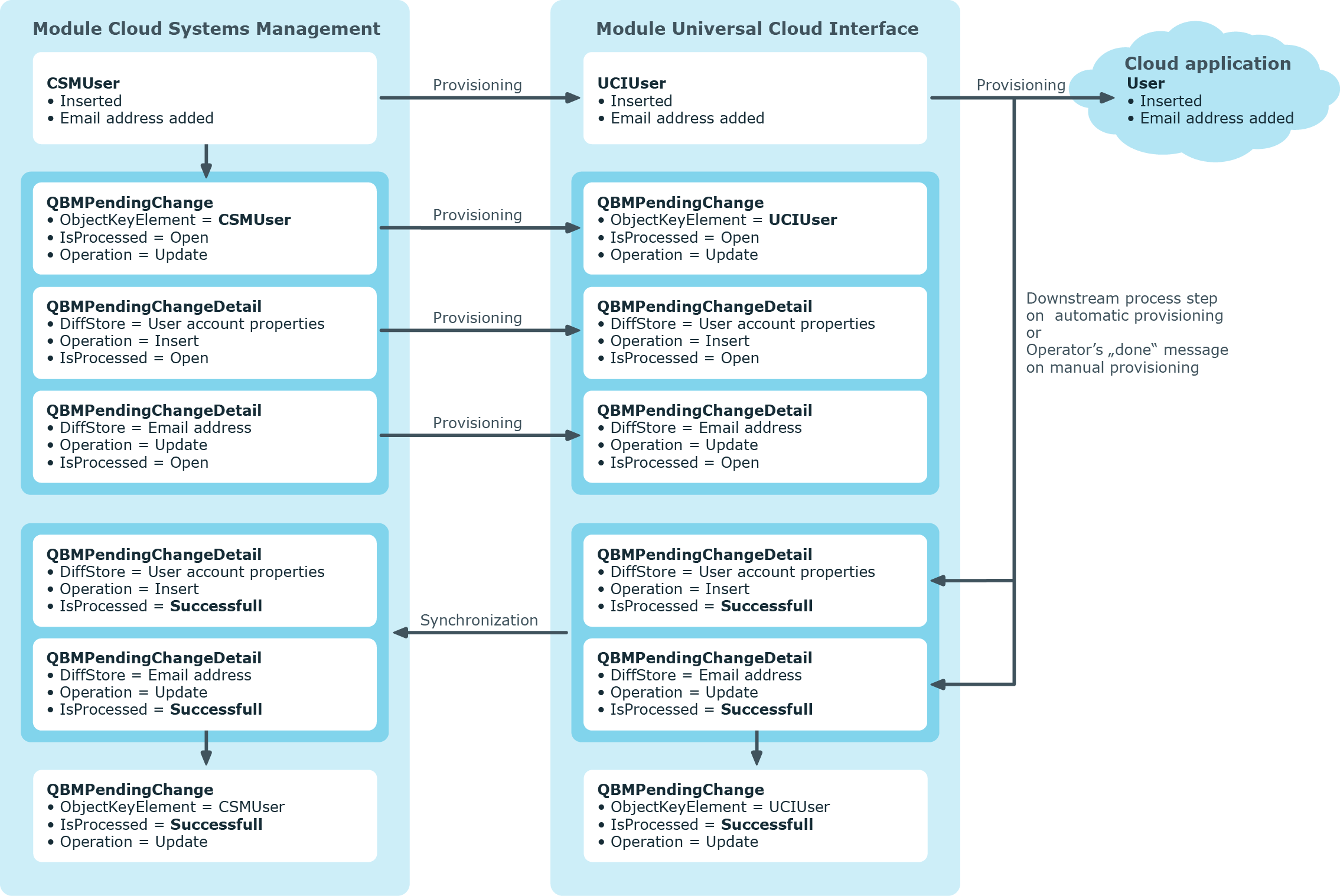Assigning groups
Use this task to view all groups that are assigned to the permissions control.
To display assigned groups
- Select the Universal Cloud Interface | <Cloud application> | Permissions controls category.
- Select the permissions control in the result list.
- Select the Assign groups task.
Related topics
Provisioning object changes
Changes to cloud objects can only be made in the Cloud Systems Management Module. Provisioning processes ensure that object changes are transferred from the Cloud Systems Management Module into the Universal Cloud Interface Module. By default, these object changes are then published in the cloud application by automatic provisioning processes. For certain cloud applications, automated interfaces for provisioning changes should not be implemented. Changes can be manually provisioned for cloud application like this. The manual provisioning processes are displayed using a Web Portal. Operators can transfer pending changes to the cloud application on the basis of this overview.
One Identity Manager logs the object changes as pending changes in separate tables. The QBMPendingChange table contains the modified objects and their processing status. The details of the changes, operations to execute, time stamp and processing status are saved in the QBMPendingChangeDetail table. Pending changes are processed in the order in which they were created if provisioning is automatic. In the case of manual provisioning, the pending changes are listed in the order they were created in the Web Portal.
The processing status of an object is not set to successful until all associated changes for this object have been successfully provisioned. An object's processing status is set as failed if all associated changes have been processed and at least one them has failed.
Detailed information about this topic
The provisioning sequence
The following image show how object changes are provisioned and how the pending changes associated with it are processed. The sequence is identical for automatic and manual provisioning processes and does no depend on whether the module Cloud System Management and the Universal Cloud Interface are installed in the same or in separate databases.
Figure 3: Provisioning sequence for pending changes

By default, the Cloud Systems Management module is synchronized hourly with the Universal Cloud Interface. This ensures that the processing state for pending changes is declared promptly in the Cloud Systems Management Module.
Displaying pending changes
You can view pending changes in the Manager. Here, manual, and automatic provisioning processes are shown.
To display pending changes
- Select the menu item Database | Pending changes menu item.
Table 29: Meaning of the icons in the toolbar
|

|
Show selected object. |
|

|
Reload the data. |



